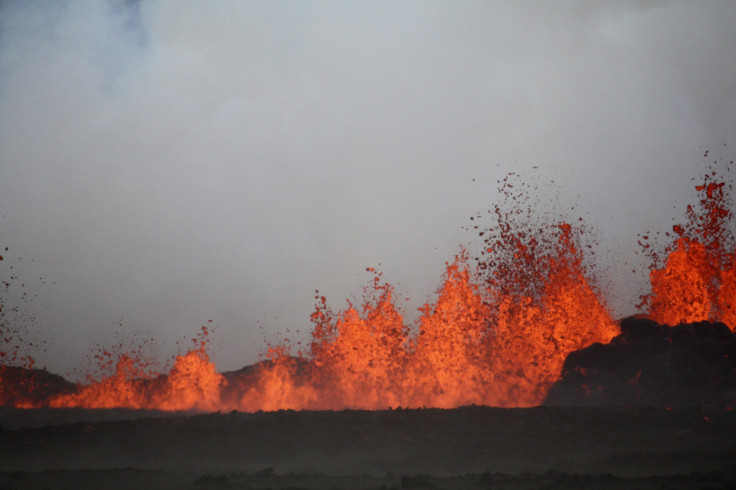Iceland's Bardarbunga Volcano: Quadcopter Drone Captures Incredible Close-Up Footage of Eruption
Two men and a quadcopter drone have captured incredible footage of the ongoing eruption at Iceland's Bardarbunga volcano, despite the front of the camera melting.
Eric Cheng, director of aerial imaging for the drone maker DJI, and photographer Ragnar Th. Sigurdsson, got as close as possible to the eruption site. Both had permits from Icelandic authorities to get close enough to launch a drone.
Cheng launched the quadcopter into the air towards Bardarbunga and used a wireless video transmission system to see what the drone's camera was picking up, Wired reported.
He recorded the footage so that he would have a video if the drone was destroyed. Upon moving closer to the eruption to launch the drone further, the video repeatedly cut out - which Cheng believes was caused by static electricity from the ash or interrupted radio signals from an electrical charge in the lava.
Cheng told US site Ktar news: "One of the policemen came over to us and said, 'We checked the rules, and vehicles can't drive closer. However, you could theoretically walk closer. I have to inform you that we officially do not recommend this, because it's dangerous.'"

When Cheng retrieved is equipment, he discovered the front of the camera had melted but the memory card and footage were still intact.
The eruption began at the end of August when a fissure opened up between Bardarbunga and Askja, a caldera situated in a remote part of the central highlands of Iceland.
The eruption area, known as the Holuraun lava field, has been hit by thousands of earthquakes and tremors. It is located just north of the Vatnajokull ice sheet, the largest and most voluminous Icelandic glacier.
The whole volcanic system stretches across 120 miles of eastern Iceland. The country is one of the most volcanically active locations in the world and it is the only area in the world where a mid-ocean ridge rises onto dry land.
Scientists believed the eruption could continue for another year and activity below the glacial ice could be catastrophic, according to the Institute of Earth Sciences.
The eruption is being continually monitored, but scientists are hindered by the toxic natural gases being emitted by the volcano. Sulphur dioxide is being carried across as far as Norway and Finland, prompting Iceland's health authorities to issue warnings to those with respiratory problems.
© Copyright IBTimes 2025. All rights reserved.






















